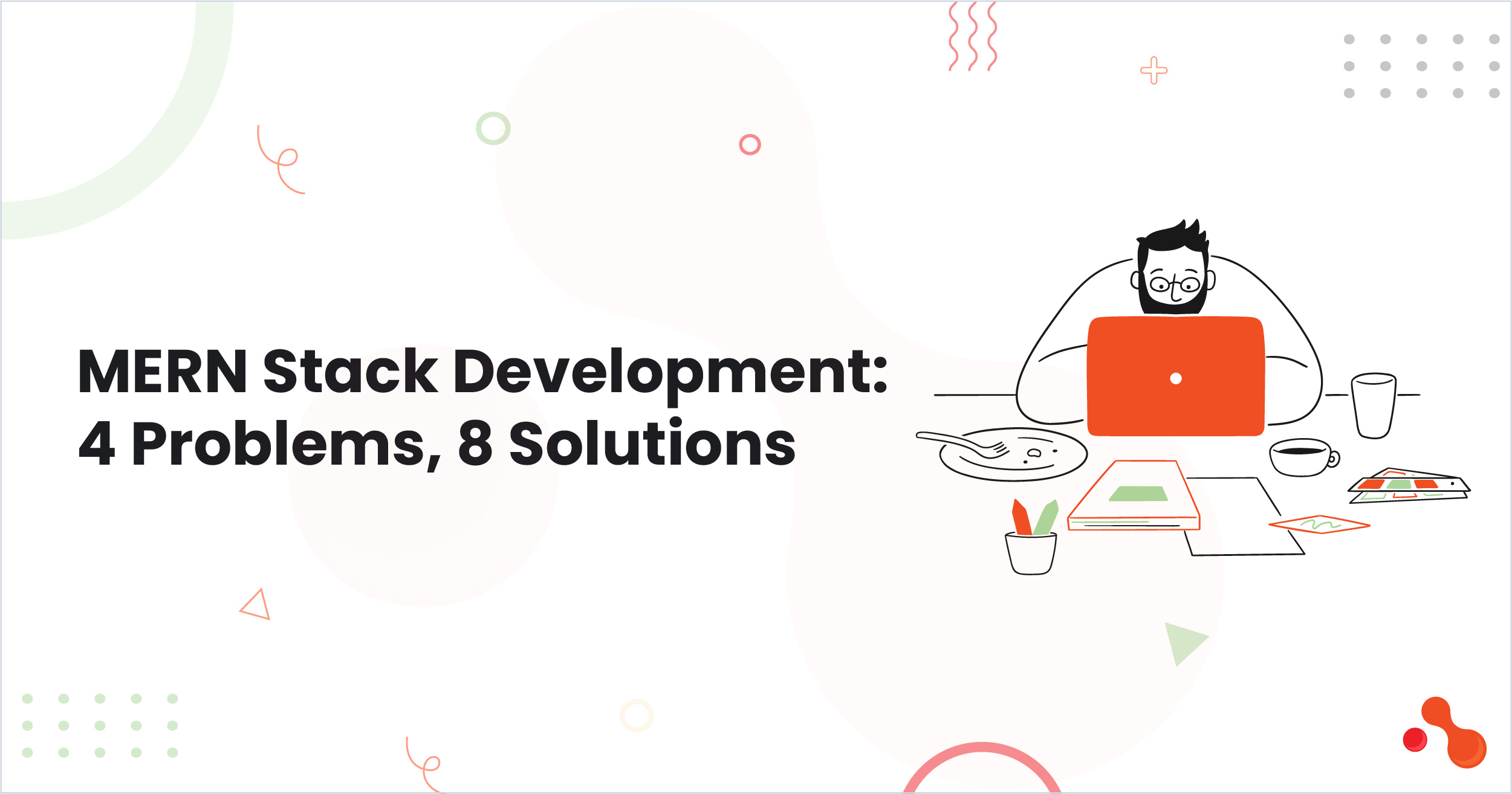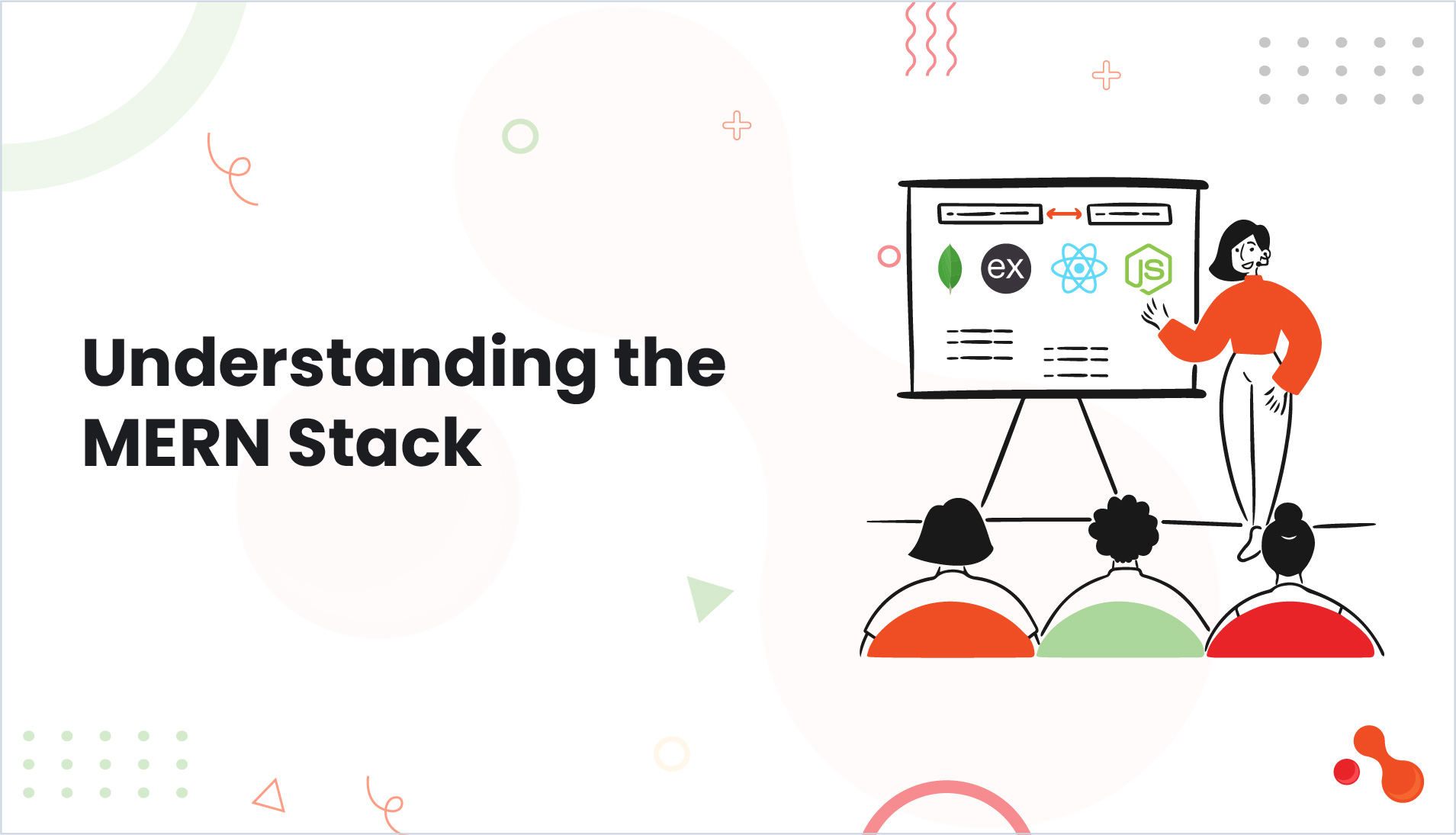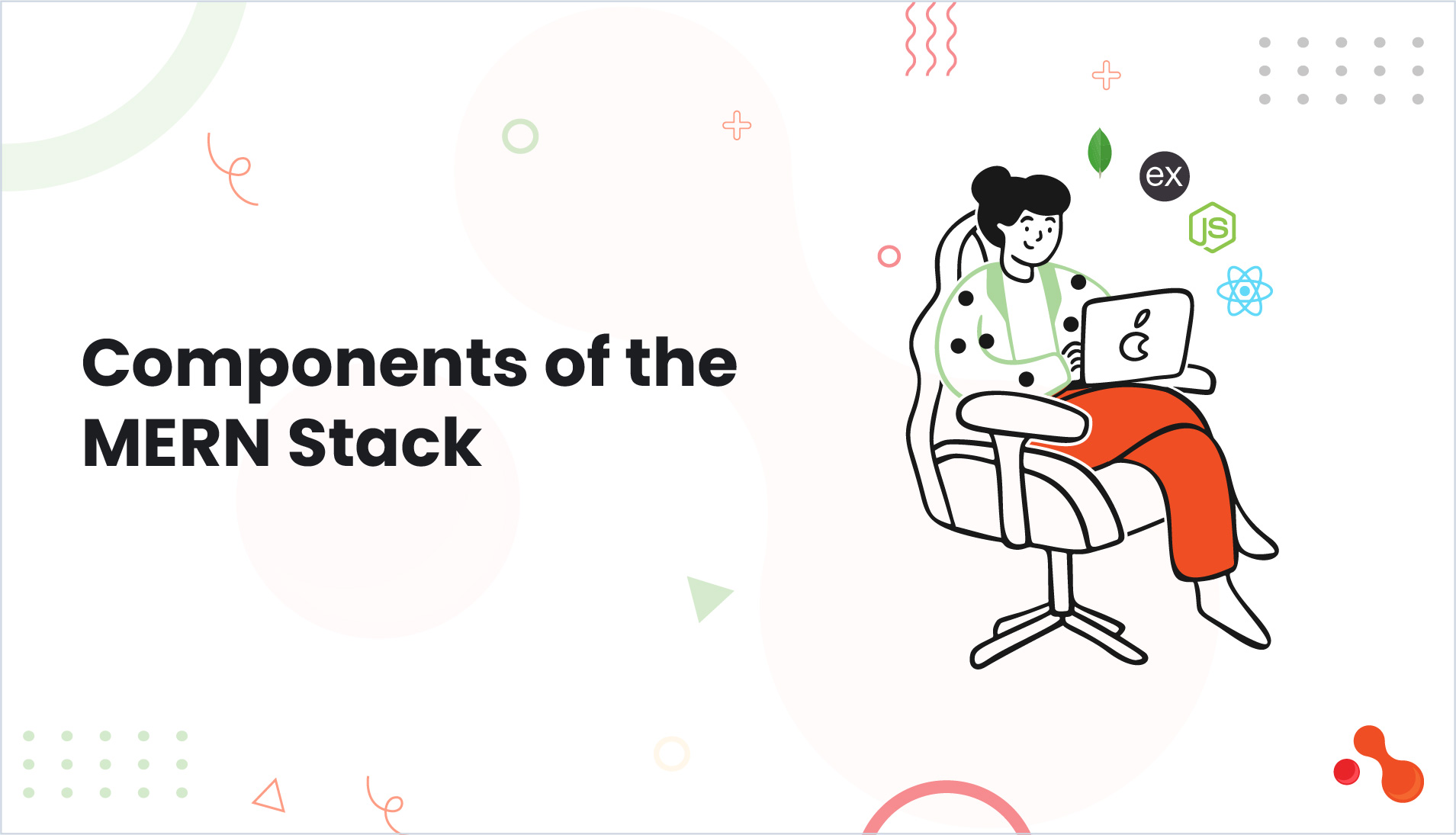MERN Stack Development: 4 Problems, 8 Solutions
 Hire Remote Developers
Hire Remote Developers
Introduction
The MERN stack, which comprises MongoDB, Express.js, React.js, and Node.js, has gained immense popularity among developers for its efficiency, flexibility, and the ability to create full-stack applications using JavaScript.
However, as with any technology stack, developers often face challenges that can impede performance and productivity. This cheat sheet provides an in-depth look at common issues associated with lagging MERN practices, offering solutions, best practices, and troubleshooting tips to enhance your development experience.
Understanding the MERN Stack

MERN Stack is a technology stack which helps developers to build an efficient and scalable web application using JavaScript. The acronym “MERN” stands for MongoDB, Express.js, React.js and Node.js where each component plays an important role in the process of software development
All the four components when combined together makes MERN stack a preferred choice for all the developers seeking an efficient full stack development.
Components of the MERN Stack

MongoDB: A NoSQL database that stores data in a flexible, JSON-like format. It is designed for scalability and flexibility, making it suitable for handling large volumes of data. MongoDB's document-oriented storage allows for easy data retrieval and manipulation.
Express.js: A minimal and flexible web application framework for Node.js that simplifies the process of building web servers and APIs. Express provides a robust set of features for web and mobile applications, including routing, middleware support, and template engines.
React.js: A JavaScript library for building user interfaces, particularly single-page applications (SPAs). React allows developers to create reusable UI components, manage application state effectively, and optimize rendering performance through its virtual DOM.
Node.js: A runtime environment that enables JavaScript to be executed on the server side. Node.js is built on Chrome's V8 JavaScript engine and is designed for building scalable network applications, allowing developers to handle multiple connections simultaneously.
Common Challenges in MERN Development
Performance Issues
Symptoms: Slow loading times, lagging user interactions, and unresponsive UI.
Solutions
Optimize Database Queries
Indexing: Use indexing in MongoDB to speed up data retrieval. Analyze query performance using MongoDB’s built-in tools like the explain() method to identify slow queries and optimize them.
Aggregation Framework: Leverage MongoDB’s aggregation framework to perform data processing on the server side, reducing the amount of data sent to the client.
Implement Caching
In-Memory Caching: Use caching solutions like Redis or Memcached to store frequently accessed data, reducing the load on your database and improving response times.
HTTP Caching: Utilize HTTP caching headers to cache responses in the browser, minimizing the number of requests made to the server.
Code Splitting in React
Dynamic Imports: Use React’s React.lazy() and Suspense to implement dynamic imports, allowing you to load components only when they are needed, which can significantly improve initial load times.
Use React.memo
Memoization: Optimize functional components by using React.memo to prevent unnecessary re-renders. This is particularly useful for components that receive the same props frequently.
Security Vulnerabilities
Symptoms: Data breaches, unauthorized access, and potential exploits.
Solutions
Sanitize User Inputs
Validation Libraries: Use libraries like Joi or express-validator to validate and sanitize inputs to prevent SQL injection and cross-site scripting (XSS) attacks.
Escape Output: Always escape output when rendering data in the UI to prevent XSS attacks.
Use HTTPS
SSL Certificates: Ensure that your application is served over HTTPS by obtaining an SSL certificate. This encrypts data in transit and protects against man-in-the-middle attacks.
Implement Authentication and Authorization
JWT (JSON Web Tokens): Use JWT for stateless authentication. This allows you to securely transmit information between parties as a JSON object.
Role-Based Access Control: Implement role-based access control (RBAC) to restrict access to certain parts of your application based on user roles.
Regularly Update Dependencies
Automated Tools: Use tools like npm audit and Snyk to regularly check for vulnerabilities in your dependencies and update them accordingly.
Debugging Difficulties
Symptoms: Errors that are hard to trace, unhandled exceptions, and inconsistent application behavior.
Solutions
Utilize Debugging Tools
Chrome DevTools: Use Chrome DevTools for front-end debugging. The Sources tab allows you to set breakpoints and inspect variables in real-time.
Node.js Debugging: Use Node.js built-in debugging capabilities or tools like Visual Studio Code’s debugger to step through your server-side code.
Implement Logging
Logging Libraries: Use logging libraries like Winston or Morgan to log important events and errors. Configure different log levels (info, warn, error) to capture the necessary details.
Centralized Logging: Consider using a centralized logging solution like ELK Stack (Elasticsearch, Logstash, Kibana) to aggregate logs from multiple sources and analyze them effectively.
Error Boundaries in React
Error Handling: Implement error boundaries in React to catch JavaScript errors in the component tree and display a fallback UI, preventing the entire application from crashing
Learning Curve
Symptoms: Difficulty in mastering the stack, confusion with syntax, and integration challenges.
Solutions
Follow Structured Tutorials
Comprehensive Guides: Utilize comprehensive guides and tutorials to build a solid foundation in each component of the MERN stack. Websites like freeCodeCamp, Codecademy, and Udemy offer structured courses.
Practice with Projects
Small Projects: Build small projects to reinforce your understanding of the stack. Examples include a simple blog, a to-do list app, or a real-time chat application.
Open Source Contributions: Contribute to open-source projects to gain practical experience and learn from other developers.
Join Developer Communities
Online Communities: Engage with online communities (e.g., Stack Overflow, Reddit, Discord) to seek help, share knowledge, and collaborate with other developers.
Best Practices for MERN Development
Code Organization
Follow MVC Architecture
Separation of Concerns: Organize your code into Model, View, and Controller layers to maintain separation of concerns and improve maintainability. This structure makes it easier to manage complex applications.
Use Environment Variables
Configuration Management: Store sensitive information (e.g., API keys, database URLs) in environment variables using a .env file. Use libraries like dotenv to load these variables into your application.
API Development
RESTful API Design
Consistent Endpoints: Follow REST principles when designing your API. Use appropriate HTTP methods (GET, POST, PUT, DELETE) and status codes to create a consistent and predictable API.
Version Your APIs
API Versioning: Implement versioning in your API endpoints (e.g., /api/v1/resource) to manage changes and maintain backward compatibility. This allows you to introduce new features without breaking existing clients.
Deployment Considerations
Choose the Right Hosting Platform
Scalability: Use platforms like Heroku, AWS, or DigitalOcean for deploying your MERN applications, depending on your scalability needs. Consider using containerization with Docker for easier deployment and scaling.
Implement CI/CD Pipelines
Automation: Use tools like GitHub Actions, Travis CI, or CircleCI to automate testing and deployment processes. This ensures consistent quality and reduces the chances of human error.
Performance Monitoring
Use Monitoring Tools
Real-Time Monitoring: Implement monitoring solutions (e.g., New Relic, Datadog) to track application performance, identify bottlenecks, and monitor server health in real-time.
Analyze User Behavior
User Analytics: Use analytics tools (e.g., Google Analytics, Mixpanel) to understand user interactions, track user journeys, and optimize the user experience based on data-driven insights.
Troubleshooting Common Issues
Application Crashes
Symptoms: The application unexpectedly stops working.
Troubleshooting Steps
Check Server Logs: Review server logs for error messages that can indicate the source of the crash. Look for uncaught exceptions or memory-related issues.
Increase Memory Limits: Adjust Node.js memory limits if the application is running out of memory. Use the --max-old-space-size flag to increase the memory allocation.
Slow API Response Times
Symptoms: Delays in API responses affecting user experience.
Troubleshooting Steps
Profile API Performance: Use tools like Postman or Insomnia to analyze response times and identify slow endpoints. Look for patterns in requests that may indicate performance bottlenecks.
Optimize Middleware: Review and optimize middleware usage in Express.js to reduce processing time. Avoid using unnecessary middleware for every route.
Dependency Conflicts
Symptoms: Errors related to package versions or missing dependencies.
Troubleshooting Steps
Check Package Versions: Use npm outdated to identify outdated packages and update them accordingly. Ensure compatibility between major versions of libraries.
Use npm audit: Run npm audit to identify and fix vulnerabilities in your dependencies. Regularly check for updates and apply security patches.
CORS Issues
Symptoms: Cross-Origin Resource Sharing (CORS) errors when making API requests from a different domain.
Troubleshooting Steps
Configure CORS Middleware: Use the cors package in your Express.js application to enable CORS. You can specify which domains are allowed to access your API.
javascript
const cors = require('cors');
app.use(cors({
origin: 'http://your-frontend-domain.com',
methods: ['GET', 'POST', 'PUT', 'DELETE'],
credentials: true
}));
- Check Preflight Requests: Ensure that your server correctly handles preflight requests (OPTIONS) by returning the appropriate headers.
State Management Issues in React
Symptoms: Inconsistent UI behavior, data not updating as expected.
Troubleshooting Steps
Check State Updates: Ensure that you are correctly updating state using the appropriate methods. Use functional updates when the new state depends on the previous state.
javascript
setCount(prevCount => prevCount + 1);
- Use React DevTools: Utilize React DevTools to inspect component state and props. This can help identify issues with state management and re-renders.
Environment Configuration Errors
Symptoms: Application fails to start or behaves unexpectedly due to misconfigured environment variables.
Troubleshooting Steps
Verify .env File: Ensure that your .env file is correctly set up and that all required variables are defined. Use the .env package to load environment variables.
Check for Typos: Look for typos in your variable names both in the .env file and where they are accessed in your code.
Hot Reloading Issues
Symptoms: Changes in code are not reflected in the browser without a full page refresh.
Troubleshooting Steps
Check Webpack Configuration: If you are using Webpack, ensure that hot module replacement (HMR) is correctly configured in your Webpack settings.
Use Create React App: If you are not using a custom setup, consider using Create React App, which comes with built-in support for hot reloading.
Unhandled Promise Rejections
Symptoms: The application crashes or behaves unexpectedly when promises are rejected.
Troubleshooting Steps
Use .catch(): Always attach a .catch() handler to your promises to handle rejections gracefully.
javascript
fetch('/api/data')
.then(response => response.json())
.then(data => console.log(data))
.catch(error => console.error('Error fetching data:', error));
Async/Await Error Handling: When using async/await, wrap your code in a try/catch block to handle errors effectively.
javascript
async function fetchData() {
try {
const response = await fetch('/api/data');
const data = await response.json();
console.log(data);
} catch (error) {
console.error('Error fetching data:', error);
}
}
Memory Leaks
Symptoms: The application consumes an increasing amount of memory over time, leading to performance degradation.
Troubleshooting Steps
Profile Memory Usage: Use Chrome DevTools' Memory tab to take heap snapshots and analyze memory usage. Look for detached DOM nodes and unreferenced objects.
Clean Up Effects: In React, ensure that you clean up side effects in your useEffect hooks to prevent memory leaks.
javascript
useEffect(() => {
const interval = setInterval(() => {
console.log('Tick');
}, 1000);
return () => clearInterval(interval); // Cleanup
}, []);
How can Acquaint Softtech help?
It was in 2013, when Mr. Mukesh Ram brought his vision into reality by launching his IT outsourcing agency “Acquaint Softtech” which is an IT Staff Augmentation and Software development outsourcing company based in India.
At Acquaint Softtech we specialize in helping business owners and founders in meeting the skill scarcity gaps present in their IT teams by helping them hire remote developers to bridge the gaps with the right skills.
Moreover, we’re also an official Laravel partner, who also provides MERN stack development and MEAN stack development services. If you’re a business that is facing hard to find cost savings solutions for your in-house team, then it is advisable to hire remote developers. Acquaint Softtech offers remote developers at just $15hour no matter if you are looking to hire MEAN stack developers or hire MERN stack developers.
Conclusion
The MERN stack is a powerful framework for building modern web applications, but developers may encounter challenges that can hinder their progress. By understanding common issues and implementing best practices, developers can enhance their productivity and create high-performing applications.
This cheat sheet serves as a quick reference guide to help navigate the complexities of MERN development, ensuring a smoother and more efficient development process.
By continuously learning and adapting to new technologies and practices, developers can overcome lagging MERN practices and deliver exceptional web applications. Emphasizing performance optimization, security, debugging, and community engagement will not only improve individual projects but also contribute to the overall growth and success of the development community.
Subscribe to my newsletter
Read articles from Hire Remote Developers directly inside your inbox. Subscribe to the newsletter, and don't miss out.
Written by

Hire Remote Developers
Hire Remote Developers
Hi, I am Mukesh Ram I founded Acquaint Softtech with a vision to make quality developers affordable to everyone. With my blood, sweat, and tears I haven’t just been able to sustain but thrive over the years. Today, I am proud to say that we have grown to a family of over 70 awesome people and expanding quickly. Every day I look forward to uniting with my professional family to provide them the best environment to grow their careers and propel us towards fulfilling the vision of Acquaint Softtech. And crack jokes in between! On a personal front, I am a foodie and a life enthusiast who loves to live each moment to the fullest.